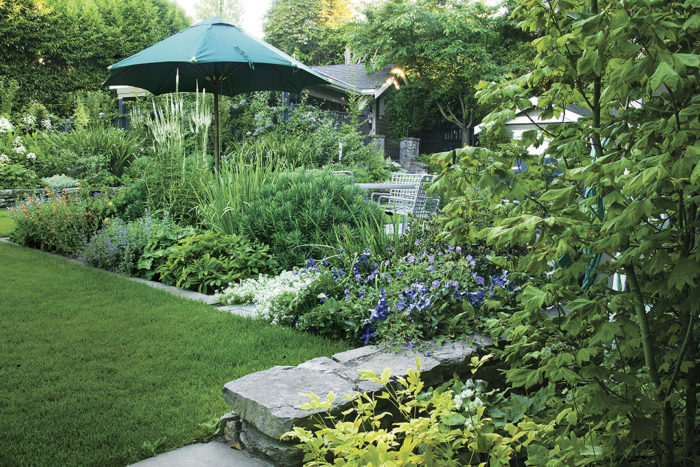
They never weeded a bed or planted a seed, but our four teenagers were heartbroken to leave the big garden of their childhood. Why couldn’t we wait 10 years? Where else would they have their graduation parties and weddings? Despite the objections, off we went to a suburban-size lot with a great house and an insipid garden less than two miles away. While I wanted to downsize, I wanted a place for those celebrations, too, not to mention an appealing setting for early morning coffee and summer dinners—and I wanted it quickly.
Many new gardens seemed laden with rows of puny plants interspersed by large gaps of soil. Was it even possible to go straight to bountiful? With the aid of a trusted garden designer, we created a landscape plan for hastened maturity. She ensured that the lines, scale, and bones were wisely situated, and I focused on the plants and the logistics. Having a framework from the beginning made a huge difference to our success. My hope was that we could skip gawky juvenility altogether—and with clever planning, well-chosen materials, and a cadre of fast-growing plants, that was where we landed.
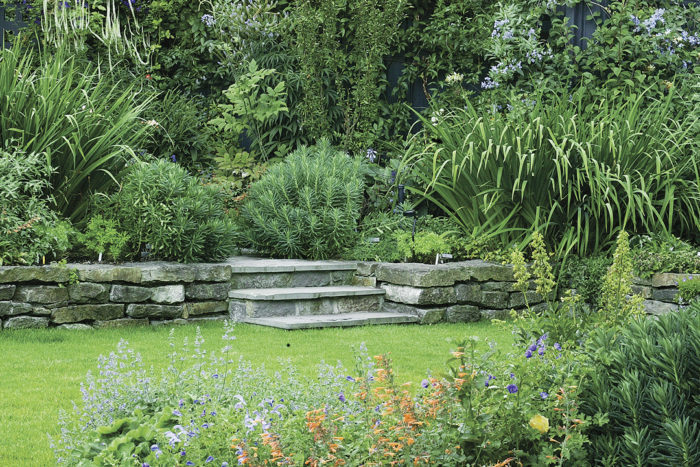
Learn what hardscaping to keep and what to toss
To begin, we decided on the hardscaping strategy. Changing and adding to the hardscape can be tricky because of budget constraints, but stonework gives the feeling of permanence to a garden. I suggest thinking about what existing hardscape you could alter to make it work. We opted to keep a flagstone patio because it was wonderfully weathered and added a sense of age to the site. Had we started from scratch, it would’ve taken years for the stone to get any character and would have had a huge impact on our budget. Instead, we reduced the patio to a shape and size that was in scale with the rest of the garden, so it was no longer the dominant (and only) focal point.
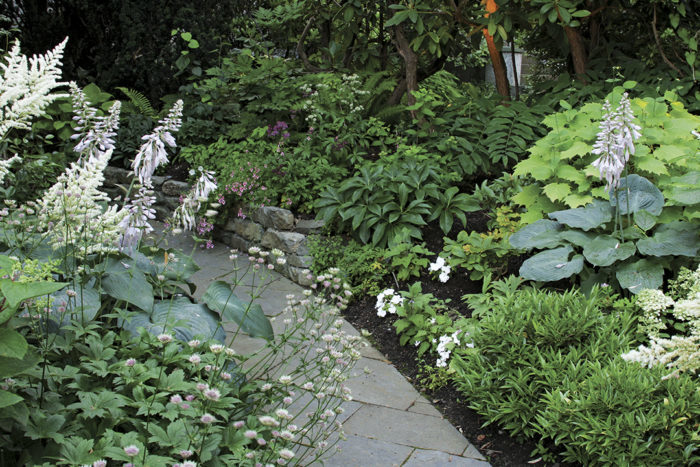
We opted to use stone in a more minor role, as well. In place of grass passageways, we laid flagstone paths. These enabled us to connect various parts of the garden more cohesively but keep it functional in another way, too: Properly placed paths make gardens feel situated. Under the guidance of a skilled stonemason, we also disassembled an old, curving stonewall across the entire back of the garden and re-created it, positioning the stones in a straight line, echoing the lines of both the fence behind it and the now smaller patio. Reusing the same stones increased the “weathered” tone while strengthening the garden’s unity. We built a small destination patio out of stone with a similar patina at the far end of the garden, a cozy scene to look out to and undoubtedly a new locale for that morning coffee. These hardscape choices made an enormous difference in minimizing awareness about the true age of the garden because of the recycled materials that were used.
Rely on hedges and fences for enclosure and scale
Hedging performs a crucial role in attaining the feeling of age in our garden, making the space feel enveloped in green. Hedging can also quickly balance the larger scale of a house—an illusion that makes the garden feel more mature. I opted to buy bushy 6-foot yews (Taxus baccata, USDA Hardiness Zones 6–9), the single biggest cost of our instant maturity plan.
Behind the yew hedge was a preexisting cedar fence, which surrounded the back garden. While functional for privacy, it was a rusty-orange eyesore. Instead of replacing it, we painted it black, an economical choice that added a bit of drama. The fence contributed to the overall mature look of the garden, and the climbers we planted to scale it did as well.
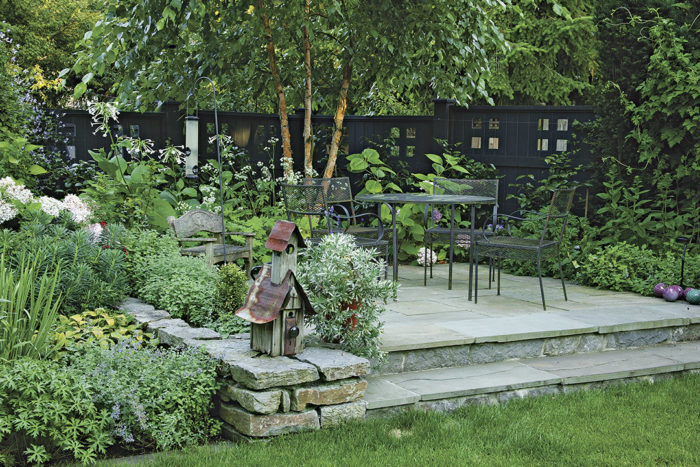
Quick-growing purple potato vine rapidly rambled over the fence and was full of flowers by late spring and stayed that way until midfall. Between the potato vines, I planted a mix of clematis (Clematis spp. and cvs., Zones 4–9) that I brought with us from our old house. Vines grow quickly, giving the garden the illusion of being laden with plants that have a “mature” height. I also used vines in other places throughout the garden: to adorn tall trellises, shimmy up trees, and frolic through other plants that would soon be installed.
Formulate a plant list based on a ratio of fast fillers to slow growers
Days after the moving van rolled away, we dug up 90% of the plants in our new “garden.” To find better homes than the landfill, we placed the giveaways in our back alley and put them on Craigslist for free. Over two weekends, we moved 20 yards of precious loam, mixing it well into every bed. In the end, amending the soil liberally at this point may have been the best thing we did for instant maturity. A friend joked, “It’s like you got steroids delivered.” All of the plants—big and small, existing and new—would ultimately thrive because of this crucial step. With a nearly blank palette, I decided arbitrarily that to get the new planting looking mature quickly, my ratio would be 70% plants for the long haul and 30% plants for the immediate future. As it turned out, more than half of the short-term choices remain five years later.
For many gardeners starting over, the hardest part is knowing what to save and what to discard in their new space. To cut costs for the long-haul plants, I saved an existing katsura (Cercidiphyllum japonicum cv., Zones 4–8) and magnolia (Magnolia cv., Zones 3–9). Trees take time to bulk up and mature, so if you have something decent to work with, try to save it. I added a second katsura and magnolia, an investment that paid off quickly by giving the space structural repetition that can normally take years to accomplish. I brought seven or eight large shrubs from my old garden (the one thing above all else I suggest relocating) and purchased a few large (3-gallon) ones. These gave the garden another head start. The shrubs I purchased had to serve multiple functions to justify their cost. They had to bulk up quickly, flower, and perhaps have good fall color or be evergreen. True-blue Augustine rhododendron (Rhododendron augustinii, Zones 6–9) and several hardy camellias (Camellia spp. and cvs., Zones 6–10) were ideal picks. Other shrubs that fit the bill were dwarf panicle hydrangeas (Hydrangea paniculata cvs., Zones 3–8) and a few disease-resistant roses (Rosa spp. and cvs., Zones 3–10).
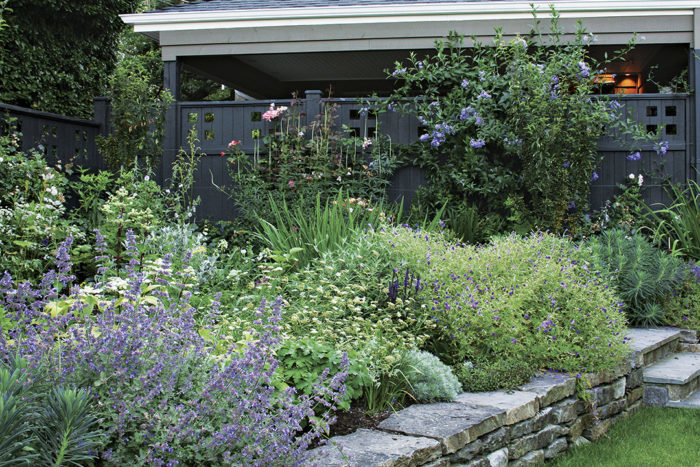
Between these structure shrubs and trees, I focused on fast fillers, and while I prioritized substance and texture over blooms, I chose many that would bloom for four to five months. These fillers also had to be quickly in scale with the bigger plants. Scented geraniums (Pelargonium spp. and cvs., Zones 9–11) were my first choice. While annuals in our climate, they still grow to generous a size—up to 30 inches tall—in eight weeks. I also relied on a few robust perennials, figuring it would be fine if I ended up pulling out some divisions once they got too big. ‘Walker’s Low’ catmint and lady’s mantle both quadrupled in size the first summer. I placed these fast-filling plants throughout the garden. Doing so helped unify different areas and made the garden feel more cohesive and established.
We started the new garden the first week of March and, with the exception of the vegetables, finished all the planting the first year by late April. From then on, we watered, fed occasionally with fertilizer to speed adjustment, and prayed for sunshine. By the following June, my teenagers were so impressed by the garden’s progression that they insisted we host a graduation celebration in our backyard. And, this July, we gathered for my son’s prewedding dinner—I guess the garden wasn’t the only thing that has matured quickly.
The Evolution of a Fast-Maturing Garden
It would be wonderful if we could buy several thousand dollars worth of mature plants and new hardscaping to make a young space feel like it was a 30-year-old garden. Thankfully, there is a way to get a fast-maturing garden with a limited budget, too. The following were the steps we took to make that happen.
Weeks 1–3: Old plants (except a few select trees) removed; existing patio downsized; new pathways installed; stone wall reconstructed
Weeks 3–8: Fence painted; back hedges sited; vines, fast fillers and long-haul plants installed
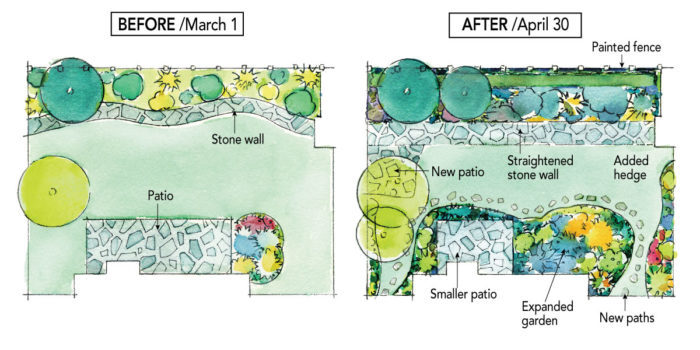
Fast Fillers That Aren’t Thuggish
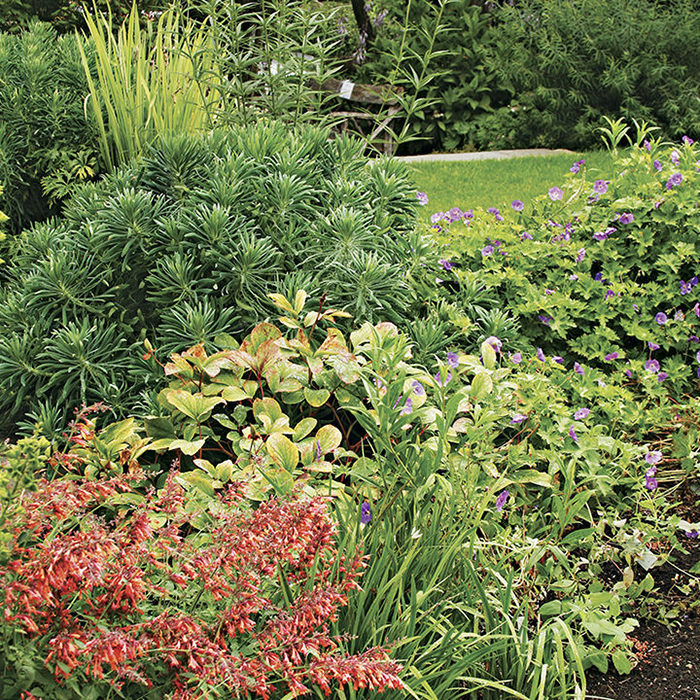
The following plants are ideal for making a garden feel full fast. Although they are rambunctious, they aren’t invasive and can generally be kept in bounds with judicious pruning or dividing.
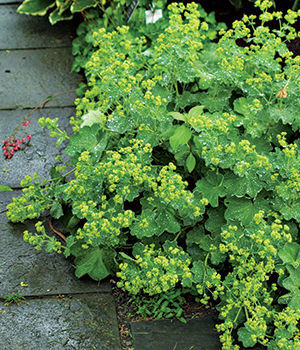
1. Lady’s mantle
Alchemilla mollis
USDA Hardiness Zones: 3–8
Size: 12 to 18 inches tall and 18 to 36 inches wide
Conditions: Partial shade; moist, well-drained soil
This stalwart expands from 4 inches across to 18 inches in a matter of weeks, and the downy, scalloped leaves hold their own from spring through fall. It pairs well with apricot and yellow-flowered roses.
2. ‘Walker’s Low’ catmint
Nepeta racemosa ‘Walker’s Low’
Zones: 4–8
Size: 24 to 36 inches tall and wide
Conditions: Full sun; well-drained soil
With its airy purple spires and gray foliage, this catmint expands quickly to spill over a wall or surround the gawky knees of shrubs. Repeat it in sunny parts of the garden to create a soothing presence.

3. Peppermint-scented geranium
Pelargonium tomentosum
Zones: 9–10
Size: 2 to 3 feet tall and wide
Conditions: Full sun; moist, well-drained soil
A fast-growing subshrub, peppermint-scented geranium has gorgeous, velvety leaves with a pungent, minty smell. Besides being an excellent fast filler, it is wonderful in bouquets. It produces a smattering of insignificant white flowers throughout the season.
4. White flowered big-root geranium
Geranium macrorrhizum ‘Album’
Zones: 4–9
Size: 1 foot tall and up to 5 feet wide
Conditions: Shade; well-drained soil
For filling in shaded spots—damp or dry—this is an unbeatable choice. It quickly covers any bare patch of ground but is easily removed, too. The cheery white flowers arrive in midspring, and the fragrant leaves are nearly evergreen.
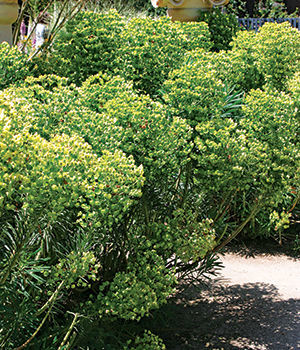
5. Mediterranean spurge
Euphorbia characias subsp. wulfenii
Zones: 6–8
Size: 2 to 3 feet tall and 2 feet wide
Conditions: Full sun; well-drained soil
This subshrub starts small with pert blue-gray leaves and quickly becomes a towering mound. The tall chartreuse flowers arrive the following spring.
6. Purple potato vine
Solanum jasminoides ‘Glasnevin’
Zones: 9–11
Size: Climbing up to 10 feet tall and 6 feet wide
Conditions: Full sun to partial shade; moist, well-drained soil
A superb scrambler or climber, potato vine is evergreen in mild climates but a hardworking annual for the rest of us. It has cheery, purple star flowers with yellow eyes. It can be pruned as hard as you like in midsummer.
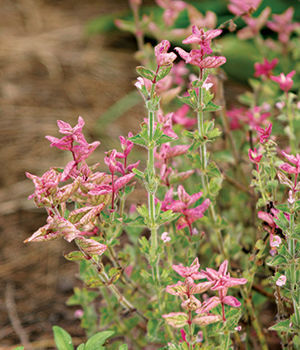
7. Clary sage
Salvia viridis
Zones: Annual
Size: 1 to 3 feet tall and 6 to 12 inches wide
Conditions: Full sun; well-drained soil
This is the one true annual I use for a fast, bountiful presence and five months of translucent blue, pink, or white blooms. Clary sage is the longest flowering annual I know. It is unusual to find in nurseries but easy to start from seed.
Julie Lane Gay is the former owner of a specialty nursery and gardens in British Columbia.
Photos, except where noted: Danielle Sherry
Fine Gardening Recommended Products

Pruning Simplified: A Step-by-Step Guide to 50 Popular Trees and Shrubs
Fine Gardening receives a commission for items purchased through links on this site, including Amazon Associates and other affiliate advertising programs.

Razor-Back Potato/Refuse Hook
Fine Gardening receives a commission for items purchased through links on this site, including Amazon Associates and other affiliate advertising programs.
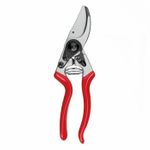
Felco Pruning Shears (F 9) - High Performance Swiss Made One-Hand Left-Handed Garden Pruners
Fine Gardening receives a commission for items purchased through links on this site, including Amazon Associates and other affiliate advertising programs.

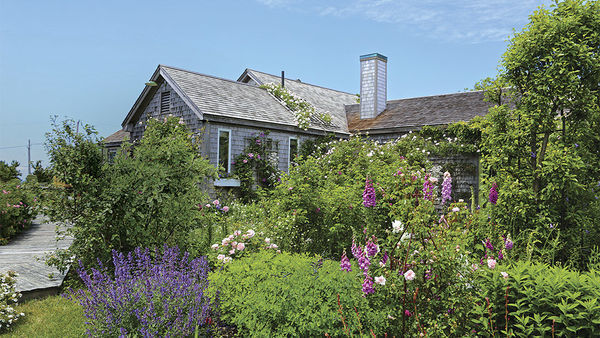


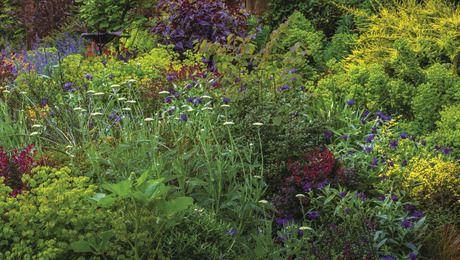













Comments
Log in or create an account to post a comment.
Sign up Log in